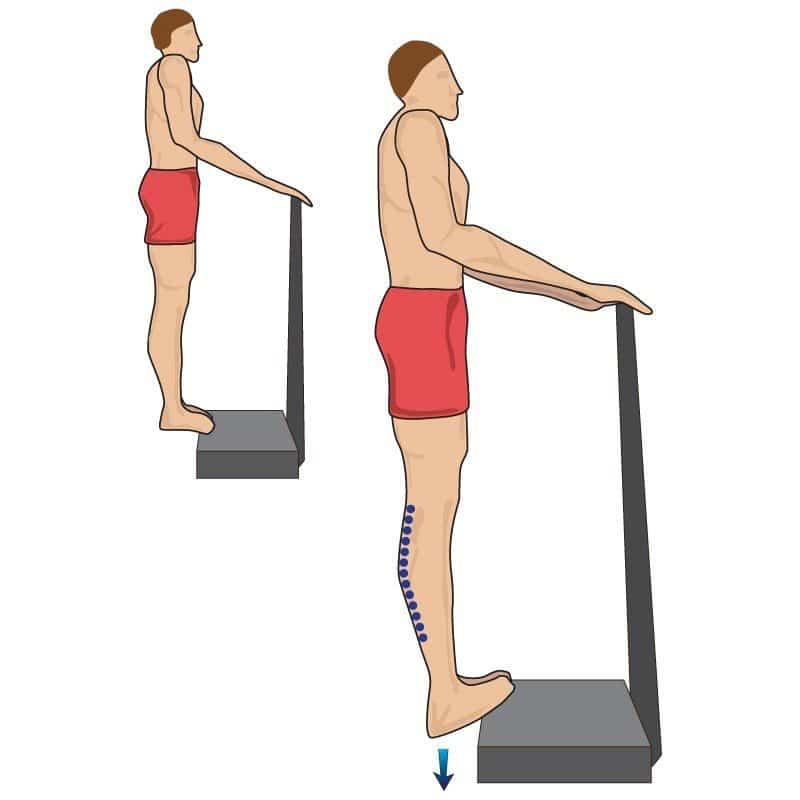Calf Muscle Stretch
What muscles does the calf stretch target?
Gastrocnemius
Soleus
Both the Gastrocnemius and the Soleus are the major parts of the calf muscle. Tightness in the calf muscle group will lead to a variety of foot and lower limb pains.
How to perform stretch:
Stand on the edge of a ledge (somewhere stable like the stairs or the gutter is ideal).You will need to have enough of your foot on the edge of the ledge so it does not slip off.
Make sure you are stable, this will allow you to hold your stretch for a longer period (better quality of stretch)
Lower both heels over the edge of the ledge
Advanced Stretching Techniques:
Try lowering one leg at a time.This increases the weight on the calf muscle and increase the intensity of the stretch.
To specifically target the Soleus muscle bend both knees.You will feel the stretch move lower and to the inside of the shin.

Anatomy:
Gastrocnemius and Soleus muscles form the calf. Plantaris is not considered a part of the calf as it is present behind the knee, while its long thin tendon extends downwards at the back of the leg and is inserted in to the heel bone.
Gastrocnemius is a large muscle; its two heads arise from the posterior aspect of the lower head of femur as well as from the capsule of knee joint. Soleus on the other hand, arises just below the knee joint from the posterior aspect of the upper ends of the two leg bones, tibia and fibula. Both heads of Gastrocnemius as well as Soleus join to form the very strong Achilles tendon, which then inserts in to the heel bone (calcaneus).
These muscles bend the ankle in a downward direction. Gastrocnemius along with Plantaris is involved in knee flexion. These muscles are also responsible for supporting the knee and ankle when standing.
Advantages:
This stretch is helpful in relieving the tightness or pain in the calves or in the Achilles tendon, especially after sports involving leaping, bouncing, climbing, jumping from heights etc. It is especially recommended after an aerobic or dance class.
Regular Range of Movement:
The muscles should be fully stretched and the ankle bent upwards to about 20 degrees from the normal standing position. One should be able to feel tightness at the front of the ankle and/or in the calf.





